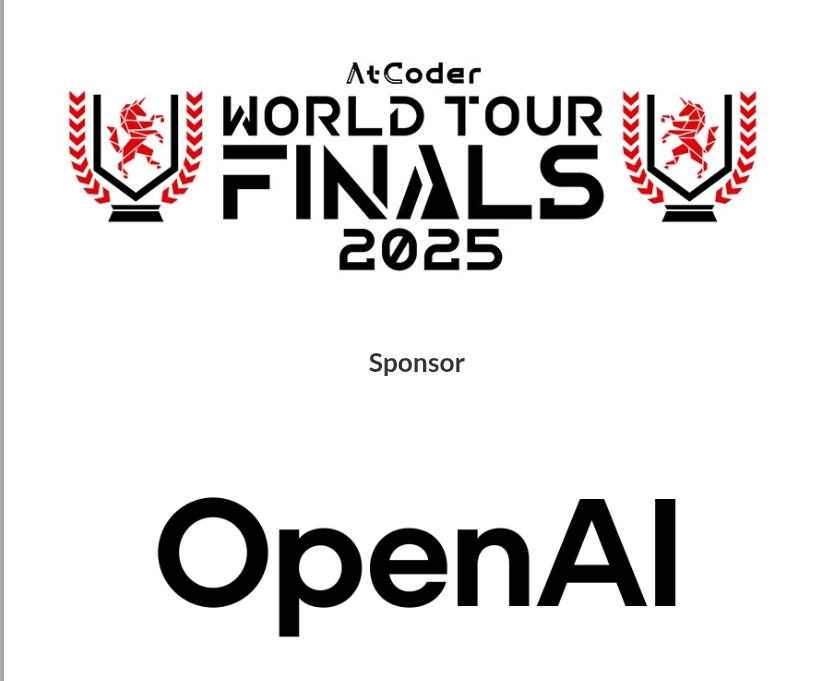The Ultimate CX Showdown: What a Coding Marathon AtCoder 2025 Teaches Us About Customer Experience
Picture this: you’re designing the ultimate customer experience. Moreover, you want it to be so compelling that the entire world watches. Furthermore, you need it to showcase the best of human potential against impossible odds. Sounds impossible? Well, AtCoder just pulled it off.
In July 2025, something extraordinary happened in Tokyo. Additionally, it wasn’t your typical customer experience story. Instead, it was a 10-hour coding marathon that taught us everything about modern CX design.
Experience Architecture: Building the Perfect Challenge
First, let’s examine how AtCoder crafted their experience architecture. Obviously, they understood that great experiences need clear structure. Therefore, they created two distinct tracks with different intensities.
The Heuristic Contest demanded ten grueling hours. Meanwhile, the Algorithm Contest compressed five problems into five hours. Consequently, participants faced varied challenge types, much like customers navigating different service touchpoints.
Furthermore, AtCoder established meaningful stakes. They offered ¥500,000 for first place. Additionally, they positioned this as humanity’s last stand against AI. Thus, they transformed a technical competition into an emotional journey.
Similarly, successful businesses create structured experiences with clear value propositions. Moreover, they understand that customers need different engagement levels throughout their journey.
Multi-Stakeholder Experience Management
However, AtCoder’s brilliance extended beyond competitor experience. Instead, they orchestrated multiple simultaneous experiences across different stakeholder groups.
The Competitor Experience: Przemysław Dębiak faced extreme physical and mental demands. Nevertheless, he found motivation through competitive pressure. Furthermore, exhaustion became a catalyst rather than a barrier.
The Observer Experience: Meanwhile, the global tech community witnessed history unfold. Additionally, they experienced suspense, surprise, and ultimately celebration. Consequently, observers became active participants rather than passive viewers.
The Industry Experience: Simultaneously, AI companies and developers gained valuable insights. Moreover, they witnessed both AI capabilities and limitations in real-time.
Therefore, effective CX design must consider all stakeholders simultaneously. Additionally, it should create value for each audience segment while maintaining cohesive narrative flow.
Emotional Journey Mapping in High-Stakes Environments
Next, let’s analyze Dębiak’s emotional journey throughout the experience. Initially, confidence likely drove his early performance. Subsequently, fatigue began affecting his decision-making capacity.
However, the critical moment came when exhaustion peaked. Nevertheless, proximity to breakthrough performance triggered renewed determination. Consequently, he accessed reserves he didn’t know existed.
“I was so tired,” Dębiak reflected afterward. “But at the same time, I was very close to getting a score comparable to the model.”
This mirrors classic customer experience pain points. Initially, customers approach with optimism. Subsequently, they encounter friction or complexity. However, successful experiences provide motivation precisely when customers consider abandoning the journey.
Therefore, smart CX designers anticipate these emotional valleys. Moreover, they build intervention mechanisms that reignite customer motivation during critical moments.
Community Response Dynamics and Feedback Loops
Furthermore, the immediate post-experience response revealed sophisticated feedback ecosystem design. Sam Altman quickly congratulated Dębiak on social media. Additionally, OpenAI acknowledged their model’s performance gracefully.
These responses weren’t accidental. Instead, they demonstrated how modern experiences extend beyond core interactions. Moreover, they showed how community celebration amplifies individual achievement.
Similarly, contemporary CX requires robust feedback mechanisms. Additionally, successful companies amplify positive outcomes through community engagement. Furthermore, they ensure that individual customer wins become shared victories.
Performance-Expectation Gap Analysis
Additionally, the competition created perfect tension through expectation management. Most observers expected AI dominance. However, the 23% victory margin surprised everyone while validating human capability.
This gap between expectation and reality generated maximum emotional impact. Furthermore, it created a narrative that resonated far beyond the immediate audience.
Consequently, effective CX design often involves strategic expectation management. Moreover, the most memorable experiences slightly exceed customer expectations in unexpected ways. Additionally, they do this without overpromising or creating unrealistic benchmarks.
The AtCoder 2025 Meta-Experience: Humanity’s Relationship with AI
Nevertheless, the deepest CX insight involves our collective experience with AI integration. Currently, we’re all customers in this broader transformation story. Additionally, we’re navigating questions about human relevance in an AI-dominated future.
Dębiak’s victory provided hope without denying reality. Moreover, it demonstrated that AI presence can elevate rather than eliminate human performance. Furthermore, it suggested collaboration possibilities rather than zero-sum competition.
“Without the OpenAI model, my score would be much, much lower,” Dębiak admitted.
Therefore, this experience taught us that AI can be a catalyst for human excellence. Additionally, it showed how competitive pressure often reveals capabilities we didn’t know we possessed.

Strategic Implications for CX Professionals
Consequently, several strategic insights emerge for CX practitioners:
First, design experiences that accommodate multiple stakeholder journeys simultaneously. Next, build intervention points that reignite motivation during emotional valleys. Moreover, create community amplification mechanisms that extend individual experiences into collective celebrations.
Furthermore, use strategic expectation management to create positive surprise. Additionally, consider how AI integration can elevate rather than replace human elements in your customer experiences.
Finally, remember that the most powerful experiences often emerge from authentic human moments under pressure.
Conclusion: The Future of Human-Centered Experience Design
Ultimately, AtCoder 2025 demonstrated that exceptional experiences emerge from perfect storm conditions. Moreover, they require careful orchestration of challenge, support, community, and meaning.
As we navigate an increasingly AI-integrated world, therefore, the lessons become even more relevant. Additionally, customers will increasingly seek experiences that celebrate and elevate human potential rather than diminishing it.
The question isn’t whether AI will change customer experience. Instead, it’s whether we’ll use AI to create more meaningful human connections and achievements.
Przemysław Dębiak showed us the answer. Furthermore, he proved that humanity’s greatest victories often come not despite our limitations, but because of how we transcend them under pressure.

